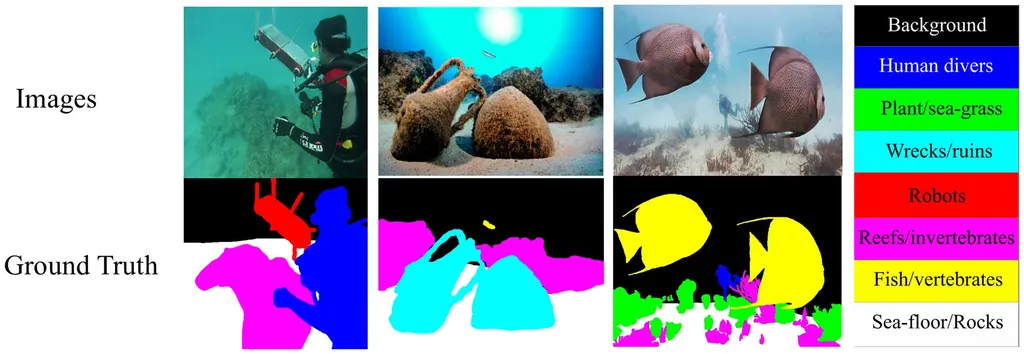In the depths of the ocean, where sunlight fades and human vision falters, side-scan sonar technology has long been a stalwart tool for underwater exploration. Yet, the complex and ever-changing underwater environment has posed significant challenges to accurate image segmentation, a critical task for understanding and navigating these submerged landscapes. Enter SonarNet, a groundbreaking innovation developed by Juan Lei and his team at the School of Marine Science and Technology, Northwestern Polytechnical University in Xi’an, China. This advanced network is set to revolutionize how we interpret underwater scenes, with profound implications for the energy sector.
SonarNet, detailed in a recent study published in the journal *Remote Sensing* (translated from Chinese as “Remote Sensing”), addresses the longstanding issues of inadequate feature representation and loss of global context in traditional deep learning approaches. “The underwater environment is incredibly dynamic and complex,” explains Lei. “Our goal was to create a system that could capture both the fine details and the broader context, ensuring that no critical information is lost during the segmentation process.”
At the heart of SonarNet lies a dual-encoder architecture, which employs residual blocks and a self-attention mechanism to simultaneously capture global structural and local contextual information. This dual approach allows the network to maintain a comprehensive understanding of the underwater scene, even as it processes high-resolution images. “By integrating these elements, we’ve been able to achieve a level of accuracy that was previously unattainable,” Lei notes.
One of the most innovative aspects of SonarNet is its adaptive hybrid attention module, which effectively integrates channel and spatial features. This module works in tandem with a global enhancement block that fuses multi-scale global and spatial representations from the dual encoders, further mitigating information loss throughout the network. The result is a system that can accurately segment sonar images with a mean absolute error as low as 2.35%, outperforming ten state-of-the-art saliency detection methods.
The commercial implications of this research are vast, particularly for the energy sector. Accurate underwater image segmentation is crucial for tasks such as offshore wind farm site selection, underwater pipeline inspection, and subsea cable routing. “The ability to precisely interpret sonar images can significantly enhance the efficiency and safety of these operations,” Lei explains. “This technology can help energy companies make more informed decisions, ultimately leading to cost savings and improved project outcomes.”
Beyond the immediate applications, SonarNet represents a significant step forward in the field of underwater scene understanding. Its innovative use of global feature extraction and hybrid attention mechanisms sets a new standard for future research. “We believe that SonarNet will pave the way for more advanced and accurate underwater imaging systems,” Lei says. “This could open up new possibilities for exploration, environmental monitoring, and resource management in the marine environment.”
As the energy sector continues to push the boundaries of offshore and underwater operations, technologies like SonarNet will be instrumental in navigating the challenges of the deep. With its superior performance and innovative design, SonarNet is poised to become a cornerstone of underwater imaging, shaping the future of marine exploration and energy development.

